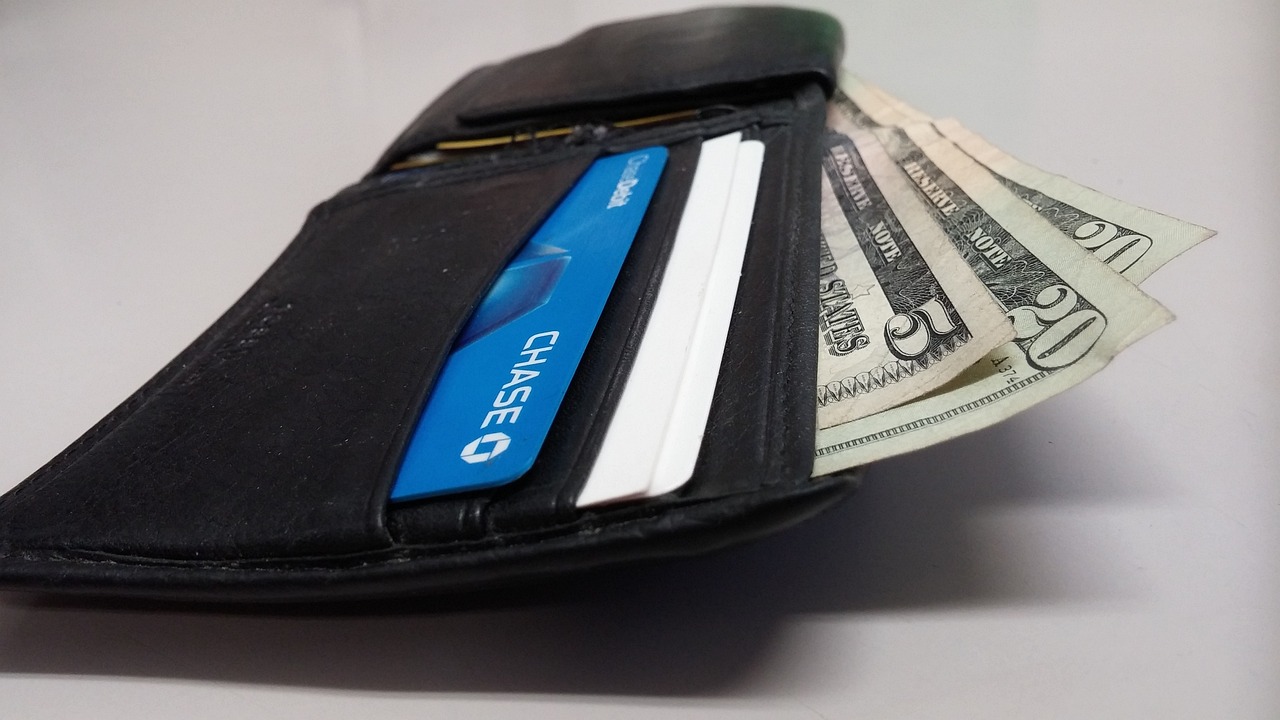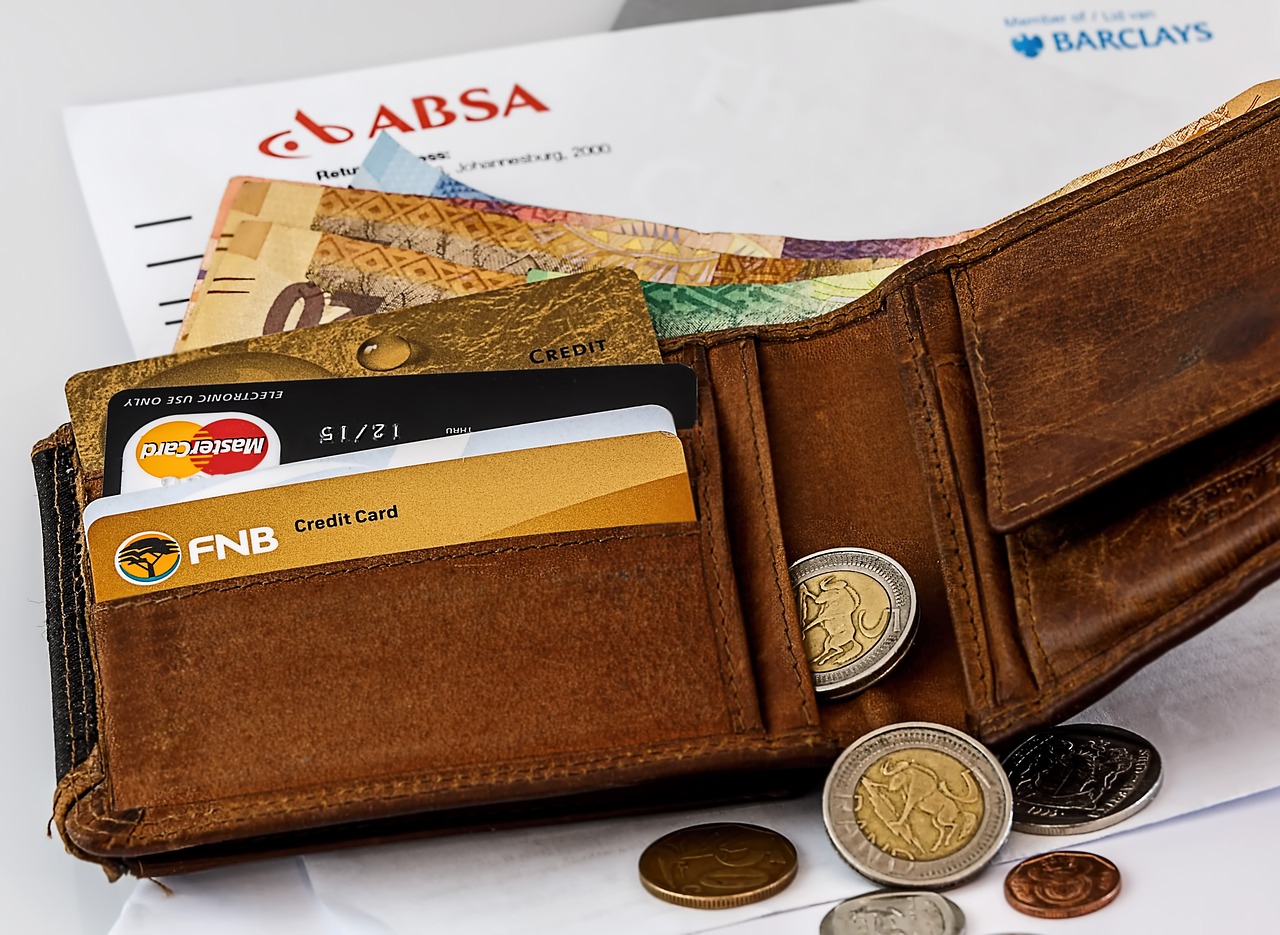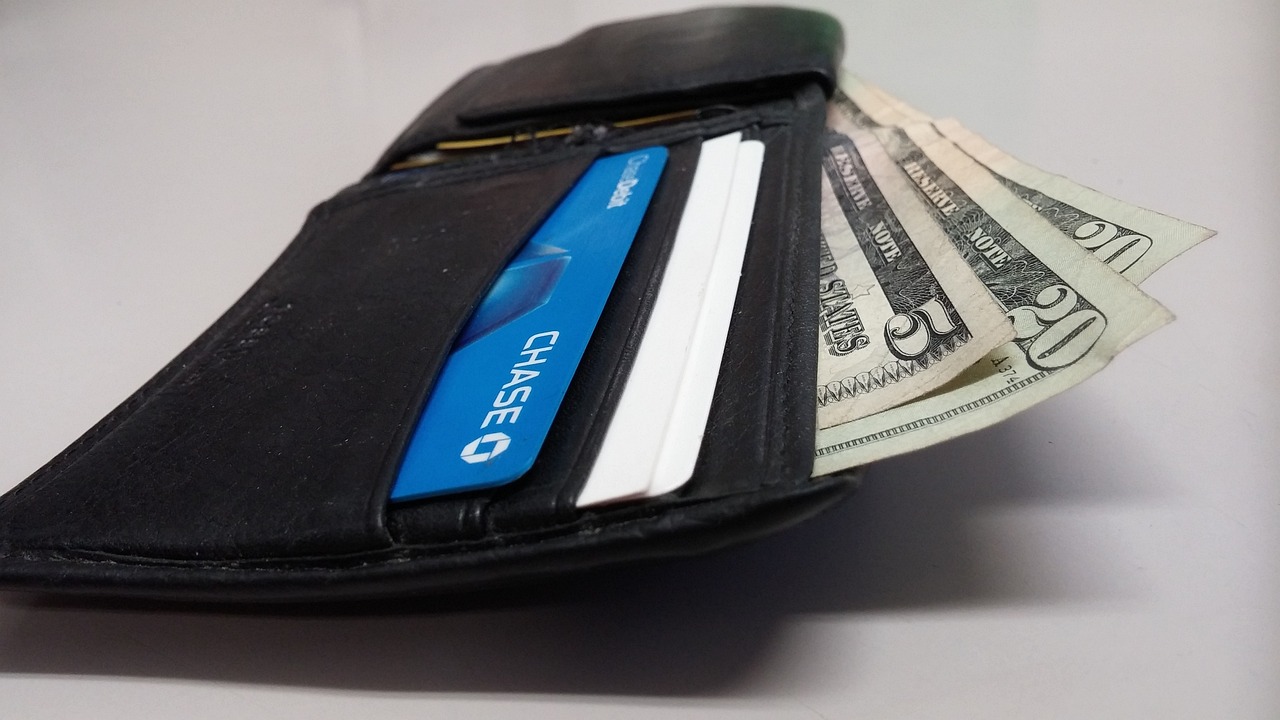How to Use Wallets to Promote Your Crypto Projects
In the ever-evolving world of cryptocurrency, standing out from the crowd is crucial for the success of your project. One of the most powerful tools at your disposal is the cryptocurrency wallet. But how exactly can you leverage these wallets to not only promote your project but also enhance user engagement and trust? Think of wallets as the front door to your crypto ecosystem; if they're inviting and secure, users are more likely to step inside. This article delves into effective strategies for utilizing cryptocurrency wallets to boost the visibility and adoption of your projects, fostering a vibrant community along the way.
Before diving into promotional strategies, it’s essential to understand what cryptocurrency wallets are and how they function within the crypto ecosystem. In simple terms, a cryptocurrency wallet is a digital tool that allows users to store, send, and receive cryptocurrencies. These wallets come in various forms, including software wallets (hot wallets) that are connected to the internet and hardware wallets (cold wallets) that store assets offline. Each type serves a unique purpose and offers different levels of security and convenience, setting the stage for how they can be utilized to promote your crypto project effectively.
When it comes to selecting the right wallet for your project, several factors must be considered. Security, user experience, and compatibility with various cryptocurrencies are paramount. A wallet that is secure yet easy to use can significantly enhance user engagement. If your wallet is clunky or hard to navigate, potential users may shy away, regardless of how innovative your crypto project might be. Therefore, it’s crucial to choose a wallet that aligns with your project’s goals and meets the needs of your target audience.
Hot wallets are convenient for everyday transactions, allowing users to access their funds quickly and easily. However, they are more vulnerable to hacks. On the other hand, cold wallets provide a higher level of security by storing assets offline, making them ideal for long-term holding. Each type has its advantages and disadvantages:
| Wallet Type | Advantages | Disadvantages |
|---|---|---|
| Hot Wallets | Convenient, easy to access | Higher risk of hacking |
| Cold Wallets | Highly secure, offline storage | Less convenient for frequent transactions |
Understanding these differences can help you strategically position your project within the market.
Security is a critical aspect when promoting your project through wallets. Users need to feel confident that their assets are safe. Highlighting the security features of your chosen wallet can build trust and encourage adoption. Whether it’s through multi-signature support, biometric authentication, or robust encryption methods, ensuring that your wallet has top-notch security can set your project apart from the competition.
Another vital factor is user accessibility. A wallet with a user-friendly interface can significantly enhance your project’s promotion. If users find your wallet easy to navigate, they are more likely to engage with your project actively. Think of it this way: would you rather walk into a store where everything is disorganized and hard to find, or one that is clean, well-organized, and inviting? The same principle applies to cryptocurrency wallets.
Integrating wallets into your crypto project can streamline user experiences and facilitate easier transactions. When users can easily connect their wallets to your platform, it not only enhances their experience but also encourages them to participate more actively in your project. This seamless integration can lead to increased transaction volume and greater community engagement, making it a win-win situation for everyone involved.
Now that we've covered the basics, let’s dive into some effective marketing strategies that utilize wallets to promote your crypto project. These strategies can include incentivizing transactions, leveraging wallet features, and much more. The goal here is to create a buzz around your project while simultaneously enhancing user experience.
Implementing referral programs through wallets can be a game-changer. By encouraging users to share your project with their networks, you can significantly increase visibility and drive adoption. Imagine a scenario where users earn rewards for every new person they bring on board. This not only promotes your project but also builds a community of advocates who are invested in your success.
Offering incentives such as rewards, discounts, or exclusive access to features for wallet users can effectively attract and retain users. Think of it as a loyalty program that not only encourages transactions but also fosters a sense of belonging within your community. Users are more likely to engage with your project if they feel valued and rewarded for their participation.
Trust is the cornerstone of any successful crypto project. Using wallets to establish credibility and trust within the community is essential. By ensuring transparency in wallet transactions and implementing robust security measures, you can build a solid foundation of trust among your users.
Transparency in wallet transactions is crucial for building trust. Users should have access to clear information regarding fees, transaction times, and security protocols. By being open about these aspects, you can foster a sense of security and reliability, which is vital in the crypto space.
Finally, collecting user feedback through wallet interactions can enhance community engagement. By actively seeking user insights, you can improve your project based on real user experiences and needs. This not only shows that you value your community’s input but also helps you create a product that truly resonates with your audience.
- What is a cryptocurrency wallet? A digital tool that allows users to store, send, and receive cryptocurrencies.
- What are the types of wallets available? There are primarily two types: hot wallets (online) and cold wallets (offline).
- How can I promote my crypto project using wallets? By integrating user-friendly wallets, offering incentives, and implementing referral programs.
- Why is security important for wallets? Security ensures that user assets are protected, building trust and encouraging adoption.

Understanding Cryptocurrency Wallets
When diving into the world of cryptocurrencies, one of the first concepts you'll encounter is the cryptocurrency wallet. But what exactly are these wallets? In simple terms, a cryptocurrency wallet is a digital tool that allows users to store, send, and receive cryptocurrencies. Think of it as your online bank account, but instead of fiat currency, it holds digital assets. These wallets come in various forms and serve different purposes, making them a crucial component of the crypto ecosystem.
There are primarily two types of wallets: hot wallets and cold wallets. Hot wallets are connected to the internet, making them convenient for frequent transactions. They are like your everyday wallet that you carry around, easily accessible but potentially vulnerable to theft. On the other hand, cold wallets are offline storage solutions, akin to a safe where you keep your valuables. These are generally considered more secure since they are not exposed to online threats. Understanding the nuances between these wallet types is essential for anyone looking to promote their crypto projects effectively.
Furthermore, cryptocurrency wallets function based on a combination of public and private keys. The public key is like your bank account number; you can share it with others to receive funds. Conversely, the private key is akin to your PIN; it must be kept secret and secure, as anyone with access to it can control your assets. This dual-key system is what enables the secure transfer of cryptocurrencies, and it’s vital for users to grasp this concept to ensure they are managing their assets safely.
As the crypto landscape continues to evolve, the potential of wallets extends beyond mere storage solutions. They can be powerful promotional tools for crypto projects. For instance, integrating unique wallet features can enhance user engagement. Imagine if every time a user made a transaction, they received a reward, or if they could easily share their wallet address with friends to encourage participation in your project. This not only fosters community but also enhances the visibility of your crypto initiative.
In summary, understanding cryptocurrency wallets is fundamental for anyone involved in the crypto space. They are not just tools for holding digital currencies; they are gateways to engaging with the broader crypto community. By recognizing the different types of wallets and how they function, you can leverage them to promote your crypto projects more effectively, ultimately driving adoption and trust among potential users.
- What is a cryptocurrency wallet? A cryptocurrency wallet is a digital tool that allows users to store, send, and receive cryptocurrencies.
- What is the difference between hot and cold wallets? Hot wallets are connected to the internet and are more convenient for transactions, while cold wallets are offline and provide enhanced security.
- How do I keep my wallet secure? Always keep your private key confidential, use two-factor authentication, and consider using a cold wallet for large amounts of cryptocurrency.

Choosing the Right Wallet for Your Project
When diving into the world of cryptocurrency, one of the first and most crucial decisions you'll make is choosing the right wallet for your project. Think of a wallet as your digital safe; it’s where you store your precious cryptocurrencies, and just like a physical safe, not all are created equal. The right wallet can enhance user experience, bolster security, and ultimately drive the adoption of your project. But how do you choose? Let’s break it down.
First, consider the different types of wallets available. Generally, they can be categorized into two main types: hot wallets and cold wallets. Hot wallets are connected to the internet, making them convenient for daily transactions but potentially more vulnerable to hacks. Cold wallets, on the other hand, are offline and provide a higher level of security, making them ideal for long-term storage. Depending on your project’s needs, you might find that one type suits you better than the other.
Next, think about user experience. A wallet with a complicated interface can deter potential users, making them feel overwhelmed and confused. A clean, intuitive design encourages users to engage with your project. After all, if someone can’t easily navigate their wallet, they’re less likely to make transactions or explore your offerings. Take a moment to visualize how you would feel using a wallet—would it inspire trust and confidence, or would it leave you scratching your head?
Security is another vital consideration. You want to ensure that user assets are safeguarded against potential threats. Look for wallets that offer robust security features, such as two-factor authentication, multi-signature support, and regular security audits. A wallet that prioritizes security will not only protect your users but also enhance your project's reputation within the crypto community. Remember, trust is hard to earn but easy to lose, especially in the world of digital currencies.
Moreover, consider compatibility with various cryptocurrencies. If your project supports multiple tokens, it’s essential to choose a wallet that can accommodate them all. Users will appreciate the convenience of managing different assets in one place, making their experience seamless and efficient. A wallet that offers broad compatibility can significantly enhance user satisfaction and engagement.
Finally, think about the community aspect. A wallet that fosters community engagement can be a game-changer for your project. Look for wallets that integrate social features, allowing users to share their experiences and interact with one another. Building a community around your project can create a sense of belonging and loyalty, which is invaluable in the competitive world of cryptocurrency.
In conclusion, choosing the right wallet for your project is a multifaceted decision that requires careful consideration. By prioritizing user experience, security, compatibility, and community engagement, you can select a wallet that not only meets your project’s needs but also enhances its visibility and adoption. Remember, your wallet is more than just a storage solution; it’s a vital tool for promoting your crypto project.
- What is the difference between hot and cold wallets? Hot wallets are connected to the internet, making them convenient but less secure. Cold wallets are offline, providing greater security for long-term storage.
- How important is user experience in wallet selection? User experience is crucial as a complicated interface can deter users from engaging with your project.
- What security features should I look for in a wallet? Look for two-factor authentication, multi-signature support, and regular security audits to safeguard user assets.
- Can a wallet support multiple cryptocurrencies? Yes, many wallets offer compatibility with various cryptocurrencies, making it easier for users to manage their assets.
- How can a wallet foster community engagement? Some wallets integrate social features that allow users to share experiences and interact, creating a sense of community around your project.

Hot Wallets vs. Cold Wallets
When diving into the world of cryptocurrency, one of the first decisions you'll face is whether to use a hot wallet or a cold wallet. Understanding the differences between these two wallet types is crucial for the success of your crypto project and the safety of your assets. So, what exactly are these wallets, and how can they be utilized to promote your project effectively?
Hot wallets are connected to the internet, making them incredibly convenient for frequent transactions. Think of them as your everyday wallet—easy to access and perfect for quick purchases or trades. However, this convenience comes with a price: hot wallets are more susceptible to hacks and cyber-attacks. On the other hand, cold wallets are like a safe deposit box for your crypto—secure and offline, but a bit less user-friendly for everyday transactions. They are ideal for long-term storage and safeguarding large amounts of cryptocurrency.
Here’s a quick comparison of the two:
| Feature | Hot Wallets | Cold Wallets |
|---|---|---|
| Connectivity | Online | Offline |
| Security | Less secure | Highly secure |
| Usability | Easy to use | Less convenient |
| Best for | Frequent transactions | Long-term storage |
Now, how can these wallets be strategically used to promote your crypto project? Utilizing hot wallets can enhance user engagement by providing a seamless experience for transactions, making it easy for users to buy tokens or participate in your project. Imagine your users being able to make quick transactions without the hassle of transferring funds from a cold wallet every time they want to engage with your platform.
Conversely, promoting the use of cold wallets can foster a sense of security among your users. By emphasizing the importance of safeguarding their assets, you build trust and credibility. You can even consider partnerships with reputable cold wallet providers to offer exclusive discounts or features for users who engage with your project. This not only enhances your project's reputation but also encourages users to take their security seriously.
Ultimately, the choice between hot and cold wallets depends on your project's goals and the preferences of your target audience. By understanding the strengths and weaknesses of each type, you can tailor your promotional strategies effectively, ensuring that your users feel secure and engaged in your crypto ecosystem.
- What is a hot wallet? A hot wallet is a cryptocurrency wallet that is connected to the internet, allowing for quick transactions.
- What is a cold wallet? A cold wallet is an offline wallet used for storing cryptocurrency securely, ideal for long-term holding.
- Which wallet is safer? Cold wallets are generally considered safer due to their offline nature, making them less susceptible to hacks.
- Can I use both types of wallets? Yes, many users opt to use both hot and cold wallets to balance convenience and security.

Security Considerations
When it comes to promoting your crypto project, security should be at the forefront of your strategy. After all, what good is a fantastic project if users feel their assets are at risk? One of the first things to consider is the type of wallet you choose for your project. Different wallets come with varying levels of security features, and understanding these can significantly impact user trust and engagement.
For instance, hot wallets, which are connected to the internet, offer convenience but can be more vulnerable to hacks. On the other hand, cold wallets store assets offline, providing a higher level of security but at the cost of accessibility. It's like choosing between a cash register left open in a busy store versus a safe locked away in the backroom. Which one would you trust more with your hard-earned cash?
Moreover, implementing robust security measures within your wallet can serve as a promotional tool. For example, if your wallet features two-factor authentication (2FA), users will feel more confident knowing their assets are protected. This not only enhances user experience but also builds your project's credibility. Consider the following security features that can help bolster user trust:
- Encryption: Ensure that all wallet data is encrypted to prevent unauthorized access.
- Multi-signature Support: This feature requires multiple keys to authorize a transaction, adding an extra layer of security.
- Regular Security Audits: Conducting audits can help identify vulnerabilities and improve security measures.
Furthermore, transparency in your security practices can significantly boost user confidence. Regularly updating your community about security enhancements and how you protect their assets can foster a sense of trust. It’s like having a transparent glass wall in a bank; customers can see the measures in place, which reassures them about their savings.
In summary, the security of your wallet is not just a technical requirement; it’s a vital component of your marketing strategy. By prioritizing security considerations, you can effectively promote your crypto project while ensuring that users feel safe and secure in their transactions.

User Accessibility
When it comes to cryptocurrency wallets, is a game-changer. Imagine walking into a store where everything is organized, easy to find, and the staff is friendly—this is what a user-friendly wallet can feel like. If your wallet is complicated or requires a PhD to navigate, users will quickly lose interest. Therefore, ensuring that your wallet's interface is intuitive and straightforward can significantly enhance user experience and promote your crypto project effectively.
A well-designed wallet should cater to both seasoned crypto enthusiasts and newcomers alike. This means incorporating features that simplify the process of sending and receiving cryptocurrencies. For instance, wallets that offer one-click transactions or simple QR code scanning can dramatically reduce the friction users face when interacting with your project. Think of it like a smooth highway versus a bumpy dirt road; the smoother the ride, the more likely people are to travel that route regularly.
Moreover, consider the importance of mobile accessibility. With the majority of users accessing their wallets via smartphones, having a responsive mobile application is crucial. Users should be able to manage their assets on the go without encountering glitches or delays. This not only enhances accessibility but also encourages users to engage with your project more frequently. A mobile-friendly wallet can be the difference between a user who checks their balance daily and one who forgets about their investment.
In addition to ease of use, providing clear tutorials and support can greatly assist users in navigating your wallet. Whether it’s through video guides, FAQs, or live chat support, having resources readily available can help demystify the process. Users appreciate when projects take the time to educate them, which can foster a sense of community and loyalty. Here's a quick table to illustrate some key features that enhance user accessibility:
| Feature | Description |
|---|---|
| Intuitive Interface | Simple design that allows for easy navigation. |
| Mobile Compatibility | Responsive design for seamless use on smartphones and tablets. |
| One-Click Transactions | Quick and easy sending/receiving of cryptocurrencies. |
| Comprehensive Support | Available tutorials, FAQs, and customer support. |
Ultimately, the goal is to create an environment where users feel comfortable and confident in managing their digital assets. By prioritizing user accessibility, you not only enhance the user experience but also promote greater adoption of your crypto project. Remember, in the world of cryptocurrency, simplicity is often the key to success.
- What is a cryptocurrency wallet? A cryptocurrency wallet is a digital tool that allows users to store, send, and receive cryptocurrencies.
- How do I choose the right wallet? Consider factors like security, user experience, and compatibility with the cryptocurrencies you plan to use.
- Are hot wallets safe? Hot wallets are convenient but less secure than cold wallets. It’s essential to understand the risks involved.
- Can I use multiple wallets for different cryptocurrencies? Yes, many users prefer to use multiple wallets to manage various cryptocurrencies effectively.

Wallet Integration with Your Project
Integrating a cryptocurrency wallet into your project can be a game-changer. Imagine having a seamless way for users to interact with your platform while managing their digital assets effortlessly. A well-integrated wallet not only enhances user experience but also streamlines transactions, making it easier for users to engage with your project. This is crucial in the fast-paced world of cryptocurrency, where every second counts and user satisfaction can make or break a project.
When considering wallet integration, think of it as the bridge connecting your project to the vast world of cryptocurrency. It allows users to deposit, withdraw, and manage their funds without leaving your platform. This convenience can significantly boost user retention and engagement. After all, who doesn’t love a hassle-free experience? Furthermore, integrating wallets can facilitate real-time transactions, which is essential for maintaining a competitive edge in the crypto market.
Moreover, a well-integrated wallet can also serve as a marketing tool. By allowing users to easily share and transact with your project, you create a ripple effect of visibility and engagement. Think of it as word-of-mouth marketing in the digital age. Users who find it easy to interact with your platform are more likely to recommend it to their friends and family, amplifying your reach exponentially.
To illustrate the benefits of wallet integration, let’s consider a few key features:
- Easy Onboarding: A user-friendly wallet interface simplifies the onboarding process, making it less intimidating for newcomers.
- Transaction Tracking: Users can monitor their transactions directly within the platform, enhancing transparency and trust.
- Enhanced Security: Integrated wallets often come with advanced security features, protecting users’ assets while they engage with your project.
However, it’s essential to choose the right wallet type that aligns with your project’s goals. For instance, if your project aims to facilitate quick transactions, a hot wallet might be the way to go. On the other hand, if security is your priority, consider integrating a cold wallet solution. The choice you make will significantly impact user experience and overall project success.
In conclusion, integrating a cryptocurrency wallet into your project is not just about convenience; it's about creating an engaging and trustworthy environment for your users. By focusing on seamless integration, you can enhance user experiences, foster community engagement, and ultimately drive the success of your crypto project.
- What is a cryptocurrency wallet? A cryptocurrency wallet is a digital tool that allows users to store, send, and receive cryptocurrencies securely.
- How does wallet integration benefit my project? It enhances user experience, simplifies transactions, and can serve as a marketing tool to boost visibility.
- What types of wallets can be integrated? Both hot wallets and cold wallets can be integrated, depending on your project's needs for security and speed.
- Is wallet integration complicated? While it requires technical knowledge, many wallet providers offer APIs and SDKs to simplify the integration process.

Marketing Strategies Using Wallets
In the ever-evolving landscape of cryptocurrency, utilizing wallets as a marketing tool can open up a treasure trove of opportunities for your project. Think of wallets not just as storage solutions for digital assets, but as powerful platforms for engagement and promotion. By implementing strategic marketing initiatives through wallets, you can significantly boost visibility and user adoption. So, how can you effectively leverage wallets to market your crypto project? Let’s dive in!
First off, one of the most impactful strategies is to incentivize transactions. Imagine this: every time a user makes a transaction using your wallet, they receive a small reward, like a token or discount on transaction fees. This not only encourages users to utilize the wallet but also creates a sense of loyalty. You can structure these incentives in various ways, such as:
- Cashback Rewards: Users receive a percentage of their transaction back in the form of tokens.
- Tiered Rewards: The more transactions a user completes, the higher their reward tier, unlocking additional benefits.
- Exclusive Access: Offer early access to new features or tokens for active wallet users.
Another effective marketing strategy is to implement referral programs through your wallet. This is akin to a word-of-mouth advertising campaign, but in the digital age. Users can share their unique referral links with friends and family, and when someone signs up or makes a transaction through that link, both parties receive rewards. It’s a win-win situation! Not only does this increase user acquisition, but it also fosters a sense of community around your project.
When crafting these referral programs, consider the following elements:
| Referral Action | Reward for Referrer | Reward for New User |
|---|---|---|
| Sign Up | 10 Tokens | 5 Tokens |
| First Transaction | 15 Tokens | 10 Tokens |
Moreover, wallets can serve as a direct line to your users, allowing you to communicate updates, promotions, and educational content seamlessly. By integrating push notifications or in-app messages, you can keep users informed and engaged. This not only enhances the user experience but also builds a loyal user base that feels connected to your project.
Lastly, consider the power of user-generated content. Encourage users to share their experiences with your wallet on social media or within the crypto community. This can be done through contests or campaigns where users showcase how they use the wallet and the benefits they’ve received. By amplifying these testimonials, you create a buzz around your project, attracting new users while reinforcing trust among your existing community.
In summary, marketing strategies using wallets can significantly enhance your crypto project’s visibility and user engagement. By incentivizing transactions, implementing referral programs, utilizing direct communication, and encouraging user-generated content, you can create a vibrant ecosystem that not only promotes your project but also fosters a loyal community of users.
Q1: How can I ensure my wallet marketing strategies are effective?
A1: Monitor user engagement and transaction metrics closely. Adjust your incentives and referral programs based on user feedback and participation rates to optimize effectiveness.
Q2: What types of rewards are most appealing to users?
A2: Users generally appreciate tangible rewards such as tokens, discounts, or exclusive access to features. Tailoring rewards to your target audience's preferences can enhance participation.
Q3: How can I promote my wallet’s referral program?
A3: Utilize social media, email newsletters, and in-app notifications to spread the word about your referral program. Engaging visuals and clear instructions can help increase participation.

Referral Programs
Referral programs are a powerful strategy to amplify your crypto project's reach and engagement. Imagine this: your existing users become your most enthusiastic promoters, sharing your project with their friends and family, all while being rewarded for their efforts. It’s like turning your customer base into a sales team, and the best part? They’re motivated to spread the word because they have something to gain!
To implement a successful referral program, you need to create a system that is straightforward and enticing. Start by defining clear rewards for both the referrer and the new user. This could be in the form of discounts, bonus tokens, or even exclusive access to features. The key is to make it appealing enough that users feel excited to share your project. For instance, you might offer a bonus of 10% of the referred user's first transaction to the referrer, creating a win-win situation.
When designing your referral program, consider these essential elements:
- Clear Communication: Make sure users understand how the referral program works. Use simple language and provide examples to illustrate the process.
- Easy Tracking: Implement a user-friendly interface within the wallet that allows users to track their referrals and rewards effortlessly.
- Promotional Materials: Equip your users with shareable content such as links, banners, or social media posts that they can easily distribute. This makes it simpler for them to spread the word.
Moreover, leveraging wallet features can significantly enhance the referral experience. For instance, integrating a referral code directly into the wallet can streamline the process. Users can simply share their unique code, and new users can enter it during their registration or first transaction. This not only simplifies the process but also increases the likelihood of participation.
Lastly, don’t forget to analyze the performance of your referral program. Regularly check which channels are bringing in the most referrals and adjust your strategy accordingly. By keeping a close eye on the data, you can tweak your incentives and promotional materials to ensure maximum effectiveness.
In conclusion, referral programs can be a game changer for your crypto project. By incentivizing your current users to bring in new ones, you create a thriving community that supports and believes in your project. So, get creative, think outside the box, and watch your project’s visibility soar!
Q: What is a referral program?
A referral program is a marketing strategy that encourages existing users to refer new users to a product or service, often incentivizing both parties with rewards.
Q: How can I track referrals?
You can track referrals through unique referral codes or links generated for each user, allowing you to monitor who brought in new users and how many rewards they have earned.
Q: What types of rewards can I offer?
Rewards can vary widely, including discounts, bonus tokens, exclusive access to features, or even cash rewards, depending on what resonates best with your audience.
Q: How do I promote my referral program?
Promote your referral program through your website, social media channels, and directly within your wallet interface to ensure users are aware of the opportunity to earn rewards.

Incentives for Wallet Users
When it comes to promoting your crypto project, offering can be a game-changer. Think of it as a cherry on top of a delicious sundae; it not only enhances the overall experience but also encourages users to engage more with your project. So, what kind of incentives can you provide? The possibilities are vast, and they can significantly boost user participation and loyalty.
One of the most effective ways to incentivize wallet users is through reward programs. Imagine a scenario where every transaction a user makes earns them points that can be redeemed for exclusive features or discounts. This not only encourages frequent use but also creates a sense of belonging among users. For example, you could set up a tiered rewards system, where users unlock better rewards as they engage more with your project. Here’s a simple breakdown:
| Tier | Transaction Amount | Reward |
|---|---|---|
| 1 | $0 - $100 | 5% Cashback |
| 2 | $101 - $500 | 10% Cashback + Exclusive Access |
| 3 | Over $500 | 15% Cashback + Exclusive Merchandise |
Another fantastic incentive is offering discounts on transaction fees. Users are always looking for ways to save money, and by reducing fees for wallet users, you not only attract new customers but also retain existing ones. This strategy can be particularly effective during promotional periods or special events where you want to drive more traffic to your project.
Furthermore, consider implementing loyalty programs where users earn tokens or coins simply for holding their assets in your wallet. This creates a win-win situation: users feel rewarded for their loyalty, and your project benefits from increased asset retention. It’s like giving a high-five to your users for sticking around!
Lastly, don’t underestimate the power of exclusive access to features or events. By providing wallet users with early access to new features, beta testing opportunities, or even exclusive community events, you foster a sense of exclusivity and community. This can turn casual users into passionate advocates for your project, spreading the word and bringing in new users.
In conclusion, the right incentives can transform your wallet from a simple tool into a dynamic platform that enhances user engagement. By implementing reward programs, discounts, loyalty incentives, and exclusive access, you’re not just promoting your crypto project; you’re building a thriving community of enthusiastic supporters.
- What types of rewards can I offer to wallet users? You can offer cashback, discounts on transaction fees, loyalty tokens, and exclusive access to features or events.
- How can I measure the effectiveness of my incentive programs? Track user engagement metrics, transaction volumes, and feedback to gauge the success of your incentives.
- Are there any risks associated with offering incentives? Yes, it’s important to ensure that your incentive programs are sustainable and do not compromise your project's financial health.

Building Community Trust Through Wallets
In the world of cryptocurrency, trust is like gold—it's invaluable. When you're trying to promote your crypto project, establishing a solid foundation of trust within the community is crucial. One of the most effective ways to achieve this is through the use of cryptocurrency wallets. By leveraging wallets to enhance transparency and security, you can foster long-lasting relationships with your users.
First and foremost, transparency in wallet transactions plays a pivotal role in building trust. When users can see their transactions and understand how their funds are being managed, it creates a sense of security. Imagine walking into a bank where you can see every transaction happening live—it would give you confidence, right? Similarly, offering users a transparent view of their wallet activity can significantly enhance their trust in your project. This can be achieved through features that allow users to track their transaction history, view balances, and even monitor any fees associated with their transactions.
Moreover, ensuring robust security measures is non-negotiable. Users want to know that their assets are safe from hacks and breaches. Implementing advanced security protocols, such as two-factor authentication (2FA), biometric logins, and regular security audits, can go a long way in reassuring your users. Consider this: if you were to choose between two wallets, one with a history of security breaches and another with a stellar reputation for safeguarding assets, which one would you trust? By prioritizing security, you not only protect your users but also enhance your project's credibility.
Another effective strategy is to actively engage with your community through user feedback. Utilizing wallet interactions to collect feedback can provide invaluable insights into your users' needs and preferences. For instance, you could implement a feature that allows users to rate their wallet experience or suggest improvements directly within the wallet interface. This not only shows that you value their opinions but also helps you make necessary adjustments to enhance user satisfaction. Think of it as having an open dialogue with your users; it makes them feel valued and part of the project.
Additionally, consider hosting community events or webinars focused on educating users about wallet security and best practices. This proactive approach not only empowers your users but also positions your project as a leader in promoting safe cryptocurrency practices. You could even create a FAQ section within your wallet to address common concerns and questions. Providing clear, concise answers can alleviate user anxiety and build confidence in your project.
In conclusion, building community trust through wallets is not just about offering a product; it's about creating an experience that prioritizes transparency, security, and user engagement. By implementing these strategies, you can cultivate a loyal user base that feels secure and valued, ultimately driving the success of your crypto project.
- How can I ensure my wallet is secure? Implement two-factor authentication, use strong passwords, and regularly update your wallet software.
- What should I do if I suspect my wallet has been compromised? Immediately change your password, enable additional security features, and contact support for assistance.
- How can I provide feedback about my wallet experience? Look for feedback options within the wallet interface or participate in community forums.

Transparency and Security
In the world of cryptocurrency, transparency and security are not just buzzwords; they are the bedrock of trust. When users engage with your project, they want to feel confident that their assets are safe and that they can verify transactions without any hidden agendas. Imagine walking into a bank where all the doors are locked, and no one can see what’s happening inside. That’s how users feel when they encounter a project lacking transparency. By ensuring that your wallet operations are transparent, you can build a solid foundation of trust.
One of the most effective ways to achieve transparency is through public ledgers. Every transaction made with a cryptocurrency wallet is recorded on a blockchain, which is accessible to anyone. This means that users can independently verify their transactions, ensuring that there’s no funny business going on behind the scenes. To further enhance this transparency, you might consider providing detailed reports or analytics on wallet performance and transaction history. This not only reassures users but also demonstrates your commitment to openness.
On the security front, it’s crucial to implement robust measures to protect user assets. Here are some key security features that you should consider integrating into your wallet:
- Two-Factor Authentication (2FA): Adds an extra layer of security by requiring a second form of identification.
- Encryption: Protects sensitive data within the wallet, making it unreadable to unauthorized users.
- Multi-Signature Transactions: Requires multiple approvals for transactions, reducing the risk of unauthorized access.
By implementing these security features, you not only protect your users but also send a strong message that you prioritize their safety. A secure wallet can be a powerful promotional tool, as users are more likely to engage with a project they trust. Remember, in the cryptocurrency space, a single security breach can tarnish your reputation overnight. Therefore, it’s essential to continuously update your security protocols and educate your users about best practices for safeguarding their assets.
Ultimately, the combination of transparency and security creates a virtuous cycle. When users feel secure and can see how their transactions are handled, they are more likely to engage with your project, spread the word, and become loyal supporters. This is not just about protecting assets; it’s about building a community where users feel valued and informed. So, as you develop your wallet and promote your crypto project, keep transparency and security at the forefront of your strategy. Your users will thank you for it!
- What are cryptocurrency wallets? Cryptocurrency wallets are tools that allow users to store and manage their digital assets securely.
- How can I ensure the security of my crypto wallet? Implement security features such as two-factor authentication, encryption, and multi-signature transactions.
- Why is transparency important in crypto projects? Transparency builds trust and allows users to verify transactions, ensuring a trustworthy environment.
- What types of wallets are available? There are two main types of wallets: hot wallets (connected to the internet) and cold wallets (offline storage).

User Feedback and Engagement
When it comes to promoting your crypto project, user feedback is like gold. Imagine trying to navigate a ship without a compass; that’s what launching a project without listening to your users feels like. Engaging with your community not only helps you understand their needs but also builds a sense of belonging and trust. So, how can you effectively gather feedback through wallets? Let’s dive into some strategies!
First off, integrating feedback mechanisms directly into the wallet interface can provide an easy way for users to share their thoughts. This could be as simple as a feedback button where users can rate their experience or submit suggestions. For instance, if a user feels that a particular feature is lacking or that the interface is confusing, they can quickly express that concern. This immediate avenue for communication is crucial because it shows users that their opinions matter and that you’re committed to improving their experience.
Another effective method is to conduct surveys within the wallet. You could send out periodic surveys asking users about their experience, what they like, and what they think could be improved. To make this appealing, consider offering small incentives like token rewards for completing surveys. This not only encourages participation but also reinforces the idea that their feedback is valued. Plus, it’s a win-win situation; you gain insights while users feel appreciated!
Engagement doesn’t stop at feedback collection. It’s essential to keep the conversation going. Regularly updating your users about how their feedback has influenced changes can create a strong sense of community. Consider maintaining a feedback loop where you share updates on improvements made based on user suggestions. This transparency is key in building trust and loyalty among your audience. They’ll see that their voices are heard, and as a result, they’re more likely to remain engaged with your project.
Moreover, creating a dedicated section within the wallet for community discussions can foster a collaborative atmosphere. Users can share their experiences, ask questions, and even discuss potential features they’d love to see. This not only enhances engagement but also creates a sense of ownership among users, making them feel like they are part of something bigger. You could even host regular AMA (Ask Me Anything) sessions through the wallet, where users can directly interact with your team, ask questions, and provide real-time feedback.
Finally, always remember to analyze the feedback you receive. Utilizing analytics tools to track user interactions and feedback trends can help you identify common pain points and areas for improvement. This data-driven approach allows you to make informed decisions that can significantly enhance user experience and project success.
In conclusion, engaging with users and valuing their feedback is not just a nice-to-have; it’s a crucial part of promoting your crypto project. By implementing effective feedback mechanisms, keeping communication open, and actively involving your community, you create a loyal user base that feels connected to your project. So, are you ready to turn those user insights into actionable strategies?
- How can I encourage users to provide feedback? Offer incentives, such as token rewards, for completing surveys or sharing their thoughts.
- What should I do with the feedback I receive? Analyze it to identify trends and common issues, then communicate how you plan to address these concerns.
- Is it important to respond to user feedback? Absolutely! Responding shows users that their opinions are valued and helps build trust.
- Can I use social media for user engagement? Yes, social media is a powerful tool for engaging with users and gathering feedback outside of the wallet.
Frequently Asked Questions
- What are cryptocurrency wallets?
Cryptocurrency wallets are digital tools that allow users to store, send, and receive cryptocurrencies. They come in various forms, including software, hardware, and paper wallets, each serving different needs and levels of security.
- How do I choose the right wallet for my crypto project?
Choosing the right wallet involves considering factors like security, user experience, and compatibility with the cryptocurrencies you plan to support. A balance between security features and ease of use is crucial to attract and retain users.
- What is the difference between hot wallets and cold wallets?
Hot wallets are connected to the internet and are more convenient for frequent transactions, while cold wallets are offline and provide enhanced security for long-term storage. The choice depends on your project’s needs and the level of security you require.
- How can wallet integration improve my project?
Integrating wallets into your project can streamline user experiences by making transactions easier and faster. This not only boosts engagement but also encourages users to interact more frequently with your platform.
- What marketing strategies can I use with wallets?
Effective marketing strategies include implementing referral programs, offering incentives for wallet users, and utilizing wallet features to promote your project. These approaches can significantly increase visibility and adoption rates.
- How can I build trust within the crypto community using wallets?
Building trust involves ensuring transparency in wallet transactions and implementing strong security measures. Engaging with users through feedback and addressing their concerns can also foster long-term relationships and credibility.
- What types of incentives can I offer to wallet users?
Consider offering rewards, discounts, or exclusive access to features for wallet users. These incentives can attract new users and encourage existing ones to remain active within your project.
- How important is user feedback in promoting my crypto project?
User feedback is invaluable as it provides insights into their experiences and preferences. By actively seeking and implementing user suggestions, you can enhance your project and build a loyal community.



















